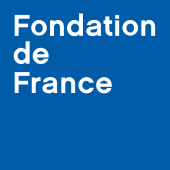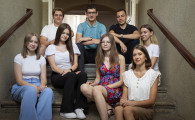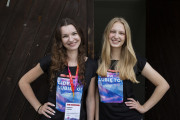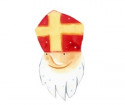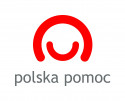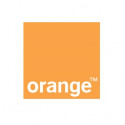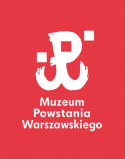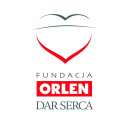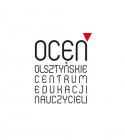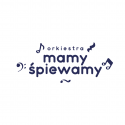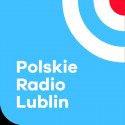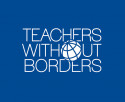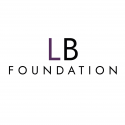Since July 2022, the Saint Nicolas Foundation, in cooperation with the Intra Association, has been running the Saint Nicolas Psychological Haven (Przystań Świętego Mikołaja), where therapy in Ukrainian language is organised free of charge for children and adolescents struggling with mental crises. In total, more than 3740 hours of psychotherapy have already been provided. Help can be provided thanks to the generosity of donors.
We encourage you to read the interview conducted by Antonina Grządkowska and Magdalena Witkowska from the Saint Nicholas Foundation. We would like to wholeheartedly thank the ladies psychotherapists from the INTRA Association: Marianna Fedorovich, Iulia Kuzmenko for their sincerity, openness and cordiality during the interview.
You can read English version of the interview below. Here is polish version.
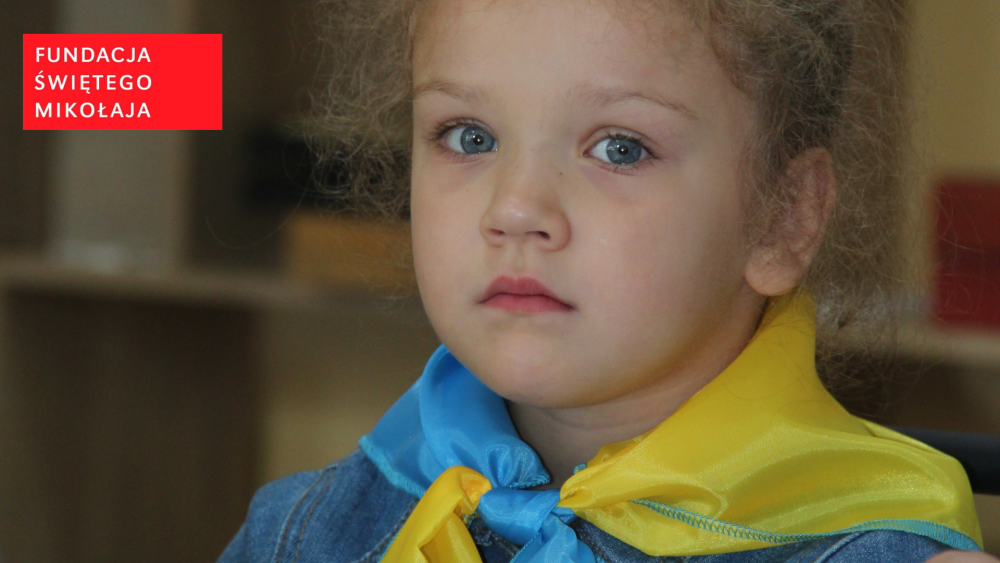
The Saint Nicholas Haven operated by Stowarzyszenie Intra provides therapy for children from Ukraine in two age categories: children below 17 years and older youth aged 17–26. What are the problems the children are facing?
The older youth are withdrawn, they feel isolated, they lack social relationships. Sometimes the whole family is in Ukraine, and the young person stays behind here, alone. The children are completely lonely. For example, we have a fifteen year old for whom family from Ukraine are renting an apartment here. He has already lost his father, who died in the war. The mother works in Ukraine and is taking care of older, ailing grandparents. She cannot come to see him, because she would have to leave them there. We really have many such cases.
Are there are also situations with the children remaining behind in Ukraine and the parents working in Poland?
That’s what the situation looked like before full-scale war broke out. Indeed, there are cases of parents staying in Poland and children returning to Ukraine because they struggle with adaptation, but those are very few.
What do the children feel who stay here, having family and loved ones in Ukraine?
They have a great sense of guilt.
Guilt?
Yes; that here, in Poland, they are safe, and, in Ukraine, the people, their loved ones, are in constant danger. Those children live in permanent fear. They often say they are unable to sleep because mum or dad are out there, in danger. There is an application on the phone that everybody now has in Ukraine. It plays a loud, sharp siren sound whenever a bombardment is approaching. In it, you can see what missiles are in the air, where, and how much time remains for people to go down to the nearest shelter. Sometimes, that’s 20 minutes to get dressed and go calmly down to the shelter; sometimes, when the missiles are inbound from Belarus, close from the border, people have 5 minutes to do it. The children, though they are here, in Poland, have that application installed on their phones. When my father visits me and has it on, it is unbearable, it strikes right at the heart. Those children, who — after all — are safe here, install that in order to be aware when alarm sirens are sounded at their parents’, friends’ or grandparents. Hence anxieties come, which is destroying them psychologically. During therapy, we ask them to uninstall the application. ‘If anything happens, you will find out in the morning. At night, you have to sleep because your nervous system is not keeping up.’
So, the children, though they are safe here, feel great tension, sense of guilt, fear…
Yes, they want to keep whatever is going on there under control. They are afraid to let go, and that is what is destroying them. It also compounds their adaptation problems. They are alone. Society is different here, everything is different, and they are still keeping track of what’s happening with their families, with their loved ones. That puts a great burden on the children.
But are there any children who can adapt to living in Poland, despite the problems?
Of course, some have adapted. But they are living in a constant uncertainty as to whether, if they make a life for themselves here, they will be able to stay here when the war is over. Let me provide an example. A small child is asking for a cat: ‘Mum, let’s take a kitty from the shelter, like we had back home, please,’ and hears back from the parents: ‘How could we adopt a kitty from the shelter if someone has already thrown them away, and we can’t know what our life is going to be like, will we be fleeing on to Germany or going back to Ukraine or something else yet.’
True, most were forced to flee, with no prior intention of migrating.
Indeed. That constant uncertainty about their everyday life, it isn’t letting them sense themselves normally. The children feel that they have no home. They say: ‘Here, even if we stay for ten years, we’re only guests. And there, we no longer have our own home.’ That is a constant suspense. To them, it is always questions and answers: ‘What am I going to cuddle up to? Where is my bed? I don’t have a bed.’ Or: ‘Where are the walls of my home? They aren’t there.’
It isn’t helping that something keeps happening in Ukraine almost every day…
Yes, there is almost never a day without something happening. I was on the bus today, and a bomb dropped on an ordinary apartment house in Chernihiv. Fifty people have been harmed as yet; the rescuers are at work, so perhaps there will be a hundred. We know this, and the children know it too. They read these news every day.
We hear news of death from Ukraine every day. The children are overwhelmed by the great fear that today, they talk to a friend, and tomorrow, they don’t know if the friend is going to be alive. That multiplies their sense of guilt. They fear not only for their loved ones but also for their city. I trace those news, I am from Lviv, but I’ve spent the last 18 years in Kyiv, I follow every news site — Lviv, Kyiv and all of Ukraine. I agonize over my cities, but Chernihiv, which has been bombarded today, hurts no less, or Odessa — everything hurts. It hurts the children all the same. Sometimes a child calms down in therapy. There was a session when the child was smiling joyfully already. Then he has read the news and comes back crying, shaking. And again, no end.
And what does the education of Ukrainian children now look like? Does it present a challenge too?
Education is a massive problem. The children are often attending two schools at a time — Polish and Ukrainian. Just the Polish school is already hard on them — a new curriculum, new children, new culture. And the parents put pressure on them to go to Ukrainian school, too. That puts an enormous amount of pressure on the child. They have no time because of that, no rest. And the parents say: ‘You have to. We don’t know what’s going to happen; if the war ends, we go back, if it doesn’t, you stay here.’ Because of that suspense, the parents don’t know what they are supposed to do, and the children come and cry to us here because they can’t keep up with the pressure.
Are there any children attending exclusively Ukrainian schools online?
There are many such children not being in education in Polish schools; so many I can’t count. They usually give up on Polish education because they can’t handle the violence at schools. That often leads to complete separation from society, from interactions with their peers. The parents often make that decision because they believe it to be better than a situation when the child must be on strong anti-depressants to go to a school that confronts them with violence.
How does that violence work?
Those are not simple situations. We aren’t talking about physical violence but about violence through rejection. The child comes to school, sits at a class table, and just a moment later, all the Polish children go sit elsewhere without saying a word to them. When that is happening every day, the child can’t cope.
The younger children’s behaviour is worse than the older ones’. For example, a boy of nine played the recording of a raid siren and put it close to a Ukrainian girl’s ear. Recently, I’ve seen the same story unfold in a playground. A boy pushed a girl, who tripped, hurt herself and began to cry. Her mother ran up in a hurry to her, as did the boy’s, shouting: ‘What are you doing? What are you doing? I’ll kill you!.’ [Idiom for exasperation and promise of punishment.] The poor child looked at his mum, almost crying, started explaining himself: ‘Forgive me, mummy, but she was speaking Ukrainian.’ He was about five, so a wee child…
Those are small children. Where is all the hostility and aggression coming from?
A child won’t come up with it on their own; it comes from the kindergarten, from home. Four-year olds already can say: ‘How long are you going to be staying here yet? You’ve been here for too long. How long can we feed you here?’ The parents are often unaware how easily children pick up on things. It is enough that the parent says something like: ‘My child did not get into preschool, but a Ukrainian one did,’ within the child’s hearing. Just a quip from the mum. She could even be helping day after day, making gift packs, and in a moment of disappointment, say something of the kind. The children hear that, and it stays with them.
It is thus important to teach children sensitivity to another; an attitude of openness and kindness. To correct the negative attitudes. And what does the situation of the older youth look like?
The older youth, who are trying to find employment, if only on holidays, meet with situations when their employer says they can’t have the same workers’ rights as Poles do, for example the same pay. That is very difficult. The kids have to rent living space here, they are often in a tough financial situation, and they have problems piling up.
Very sorry to hear all that. It is sad that after such a difficult time, the experience of war, the children have to cope with rejection. Do positive attitudes still occur in Polish-Ukrainian peer interactions?
Of course, that was especially the case early on. We were met with great helpfulness, cordiality, openness. I have a couple of girls in my care who study in Poland and live in a dorm with Polish girls. They said when they came to the dorm, the first weeks, they didn’t even have enough clothes because all they had fit in a backpack. Clothes, toothbrushes, shampoo, cosmetics, lotions, when state-organized aid was not yet there during the initial days, the Polish girls gave all that them. They have said the friends are still helping them, inviting them to birthday parties, including them in social networks. My child also has some good experience, especially from the early days. The boy would say: ‘God, Mum, in all of my life you haven’t hugged me as much as the Polish kids have, you know?’ He became friends with a Polish lad. They still visit each other. We have good stories, too. Such warm, really touching stories.
It’s good one can still hope for openness. Adaptation is not easy for children with such traumas.
Yes. Even those Ukrainian children who have normal contacts with Polish children here, they can’t share whatever pains them because, in reality, no one can understand that, only someone who’s been through it. Those children have Polish friends. They are accepted here. They have managed to overcome adaptation problems. But it’s still very important for them to have a place to come where they can talk to others who have been through the same. I can see that in group therapy. I have some kids from the East, from Kharkiv and the environs, who have seen the worst things. On the anniversary of the war, they were here for group therapy, asking one another: ‘What did you see?’; ‘How long did you sit in the shelter? I sat for five days in Kharkiv’; ‘Did you have water? Where did you go to bathroom?.’ The kids can talk to each other about that, and it’s very important to them… that I survived something like that, that I was on a concrete floor, in the winter at –12 °C, that I did not have electricity, bathroom, food or water and could not leave. And someone else experienced the same thing.
Do shared experiences bring them closer?
Especially the fact that the difficult ones can be shared with someone who’s also had them. The children can sometimes keep reminiscing for half an hour. It’s an important thing, sharing such emotions and difficult experiences in a group.
Is that why group therapy is so important?
Exactly. The children make acquaintances and social networks, and they can share their problems. One kid doesn’t know the language; the other knows it more or less but is socially withdrawn. The children often struggle to find living space when they are left alone. As they find friends here in therapy, they can rent a space together, two or three of them. It’s easier that way. Before, they were on their own.
There were cases of girls remaining in toxic, violent relationships, with no chance of leaving them because they had no one here. Because of meeting people in the group here they were able to. We also have a boy who had a huge bullying problem at school. He was afraid to talk to his parents, he was increasingly afraid of school, he was increasingly withdrawn. Thanks to therapy, he can talk to his parents now and manage the relationship. The parents have raised the issue with school authorities and been able to solve it together.
Among those difficulties, is there a ray of hope? Do you have any stories of children in a very touch condition successfully helped by the therapy?
God, very many. When I was starting to work at Saint Nicholas Haven in July 2022, that was the first wave of kids, difficult cases — PTSD, trauma, kids losing awareness or becoming afraid to be left alone in their room. The parents could not close the door or stay in a separate room. By now, many of those children can cope. They have friends, they sleep at night. There kids no longer in therapy, having finished in a year and a half. Of all those who came to me at the beginning, in July 2022, I only have two girls still in therapy. I can’t count how many people have come and gone.
So there were very many crisis interventions in the beginning?
Yes. A crisis intervention was five to ten meetings, and we could stabilize the child. Of course, there were many serious cases, with loss of awareness, with depression. God, I have so many kids who are self-harming…
Self-harming?
The youngest self-harming child in my care is eight and a half. That is terrible for me, because at university, they always said self-harm starts at twelve, and now I have a girl who is cutting herself at eight and a half. This is horrifying, because it’s something that doesn’t even exist in the books. There is no information about what to do with such a child. No guidelines for therapeutic work. But there is a veritable abundance of happy endings, and I’m really happy that we’ve been able to save the children thanks to the Foundation. There are families who have journeyed on or returned to Ukraine but are getting back in touch with us, saying thanks. That is moving. Their gratitude shows how important this work is, how needed.
Enormously. A year ago, you had much to say about the mums and the difficulties facing them and taking the toll on the children. What does the situation look like now?
Of course, we are in contact with the parents because a parental session is always part of therapy. The main problem is the uncertainty. The mother does not know whatever she’s supposed to, make her best effort to manage here because she’s staying, or try to ‘hold on’ to something there. Secondly, the finance. We are talking especially about mothers; they are usually alone here. To afford rent in Warsaw, a mother has to work more than a full-time job. She’s almost never home. She comes back exhausted. She also works weekends. The children fend for themselves. The mums confide: ‘I can’t recognize myself. I’m lashing out on my children.’ They are overstrained. That is emotional exhaustion and job burnout. They say: ‘God, they are my children, my whole world, and I come back and scream at them; later at night, the guilt makes me cry. Why did I take it out on them?.’ Often, that happens because they are at the end of their tether.
It’s good that there is a space for working on those relationships in therapy with children. Last year, PTSD was a great challenge. Has that changed?
Yes. The priorities are different now. The main problem is peer violence and depression in children. Among the youngest children, almost every third child is on anti-depressants. That was not the case at the beginning, but now it’s getting worse and worse. Moreover, like I said before, younger and younger children are self-harming and coming up with horrifying ways of inflicting pain on themselves.
Fortunately, you’re doing a great job and successfully helping them. So let’s go back to those good stories. Anything particular on your memory?
Of course. I have a girl in therapy. Her father died in the war, in June. A horrible story. The dad’s corpse was brought over the course of several weeks, in parts. First came one part and went into the freezer, then another one, after the DNA testing. Only then could they bury him. The girl was in a very difficult condition. She was given psychiatric aid, anti-depressants, and therapy that we are still continuing. She’s a completely different child now. It seems to be a success, though I’m afraid of June and the anniversary of [her dad’s] death. I know all of that is going to resurface. The first three months after the funeral, she would come to me twice a week. Now she comes once weekly or biweekly. At the beginning, there was not a session without tears. Now, it’s truly better.
Those moments when you see someone come back to life thanks to your efforts are probably worth all the work. But day by day, it must be very tough?
Yes. Once, I said to my mother the war should be over with as soon as possible, because when I’m fifty or sixty, I’ll be writing about all this, because the stories I have learned, I’m afraid to forget them. I really fear that, in ten years from now, I might no longer remember them. And the stories of the people I meet, I want to remember them always and pass them on. To my child and to his children. I want us never to forget that. That which Ukrainian children are facing and the times we live.
We don’t want to forget. We won’t forget. Thank you for being with us, but above all for being with the children.
We wholeheartedly thank the Fondation de France, which is funding the psychological programme run at the Saint Nicolas Haven by the INTRA Association.
Thanks to you, we can help children from Ukraine.
